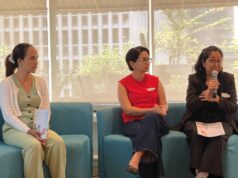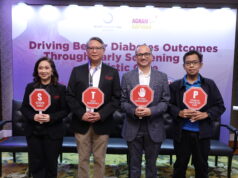Medicine Cabinet
Teodoro Padilla
THOUSANDS of potential new treatments offer the hope of closing the gap of unmet medical needs to save lives and improve the health of patients and their families.
This was one of the key findings in the report, “The Biopharmaceutical Pipeline: Innovative Therapies in Clinical Development,” which provided insights on the current drug development pipeline.
The report disclosed that about 74% of medicines in clinical development are potentially first-in-class medicines. These are medicines that offer new treatment options for patients who have neither responded to existing therapies or for whom no treatment options are available at the moment.
The report said that the current biopharmaceutical pipeline contains more than 7,000 potential first-in-class medicines for cancer, cardiovascular diseases, diabetes, neurology, Alzheimer’s disease, and psychiatry.
While scientists put focus on major illnesses, rare diseases are also high on the agenda. The World Health Organization (WHO) said that rare diseases are serious chronic illnesses and may be life threatening.
Despite the uncertainties and complexities in the development of new medicines, the biopharmaceutical pipeline is robust with innovative new treatments to address the needs of patients suffering from rare diseases.
Published by the Analysis Group, the report revealed that there are 822 orphan drugs that are in clinical development or regulatory review. Orphan drugs are medicines that treat rare diseases affecting fewer than 200,000 people.
Orphan drugs are being developed across several disease categories. More than 400 treatments are in development for cancer, followed by immunology (60), neurology (58), infections (32), musculoskeletal (26), and cardiovascular (25).
However, the report explained that acquiring an orphan drug designation does not necessarily mean that the medicine will ultimately be approved as an orphan drug. These potential new medicines must go through the research and development (R&D) process prior to regulatory approval.
The publication “Biopharmaceutical Research and Development: The Process Behind New Medicines,” said that the average cost to research and develop each successful drug is about $2.6 billion, or about P130 billion. This investment includes the cost of failures where thousands or millions of compounds are screened but only few will eventually receive regulatory approval. The overall probability of clinical success is less than 12%. On average, it takes at least 10 years for a new medicine to complete the R&D process.
The first stage of R&D is the discovery process. This first step takes approximately three to six years. It includes research and initial laboratory tests in search for a promising drug candidate to study further during the development process.
During the development process, a candidate drug must demonstrate that it is safe and effective for humans. The process is a series of extensive and crucial studies involving three phases of clinic trials. These three phases are conducted with specific purposes to help researchers answer particular questions on safety, efficacy and the benefits and risks of the candidate medicine. They are carried out according to a detailed plan or protocol.
The Pharmaceutical Research Associations of America said that the development process is both expensive and time-consuming, and ends more often in failure than success. It takes an average of six to seven years to complete the clinical trial stage.
Biopharmaceutical companies also work with committed scientists, doctors, nurses, lab technicians, clinical trial support team members, and clinical trial managers, among others to fulfill their task of finding cures for patients worldwide.
(To be continued)
Medicine Cabinet is a column of the Pharmaceutical and Healthcare Association of the Philippines (PHAP), representing the research-based medicines and vaccines sector in the country. The author is the executive director of PHAP. E-mail the author at medicinecabinet@phap.org.ph.



